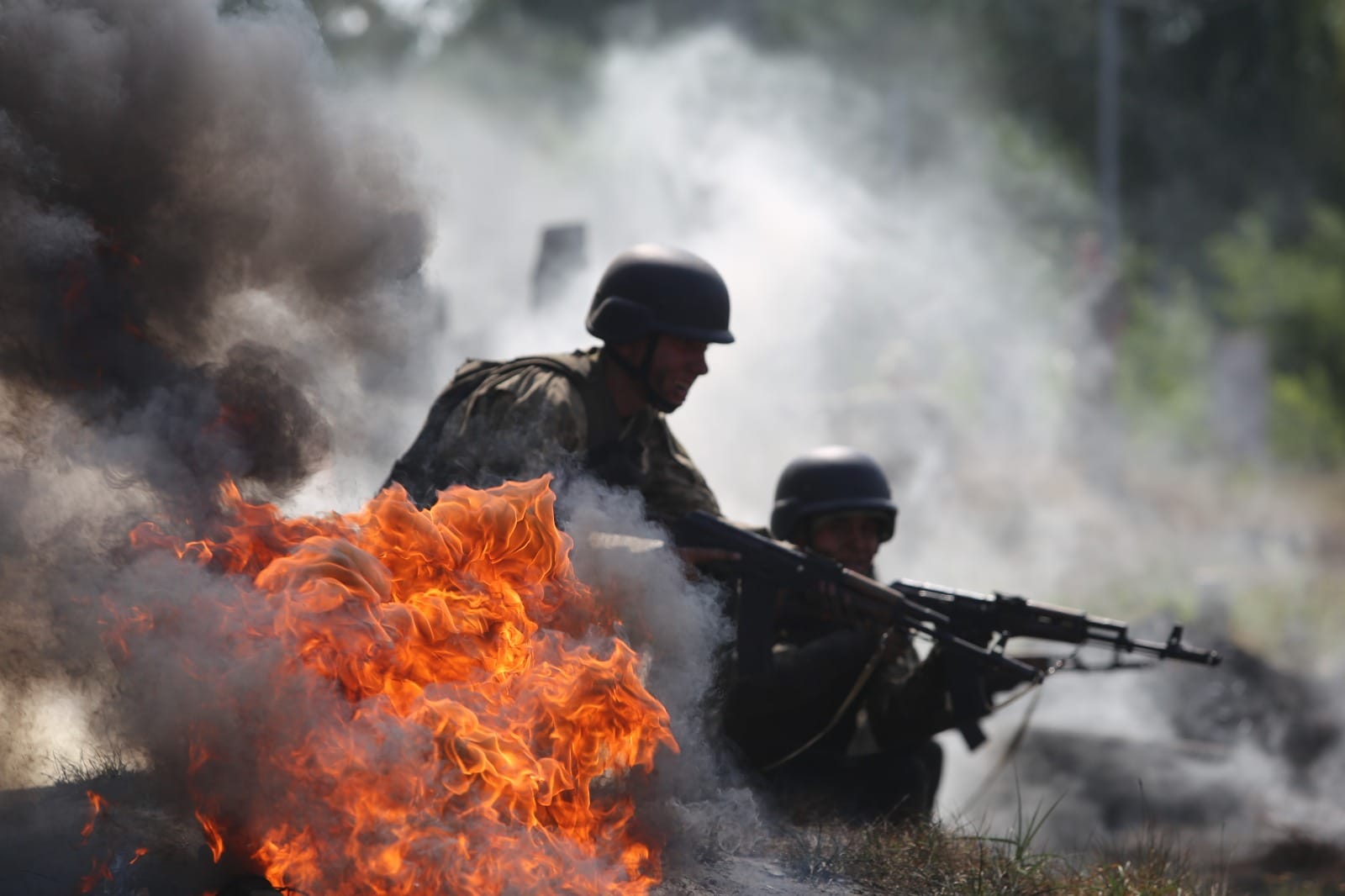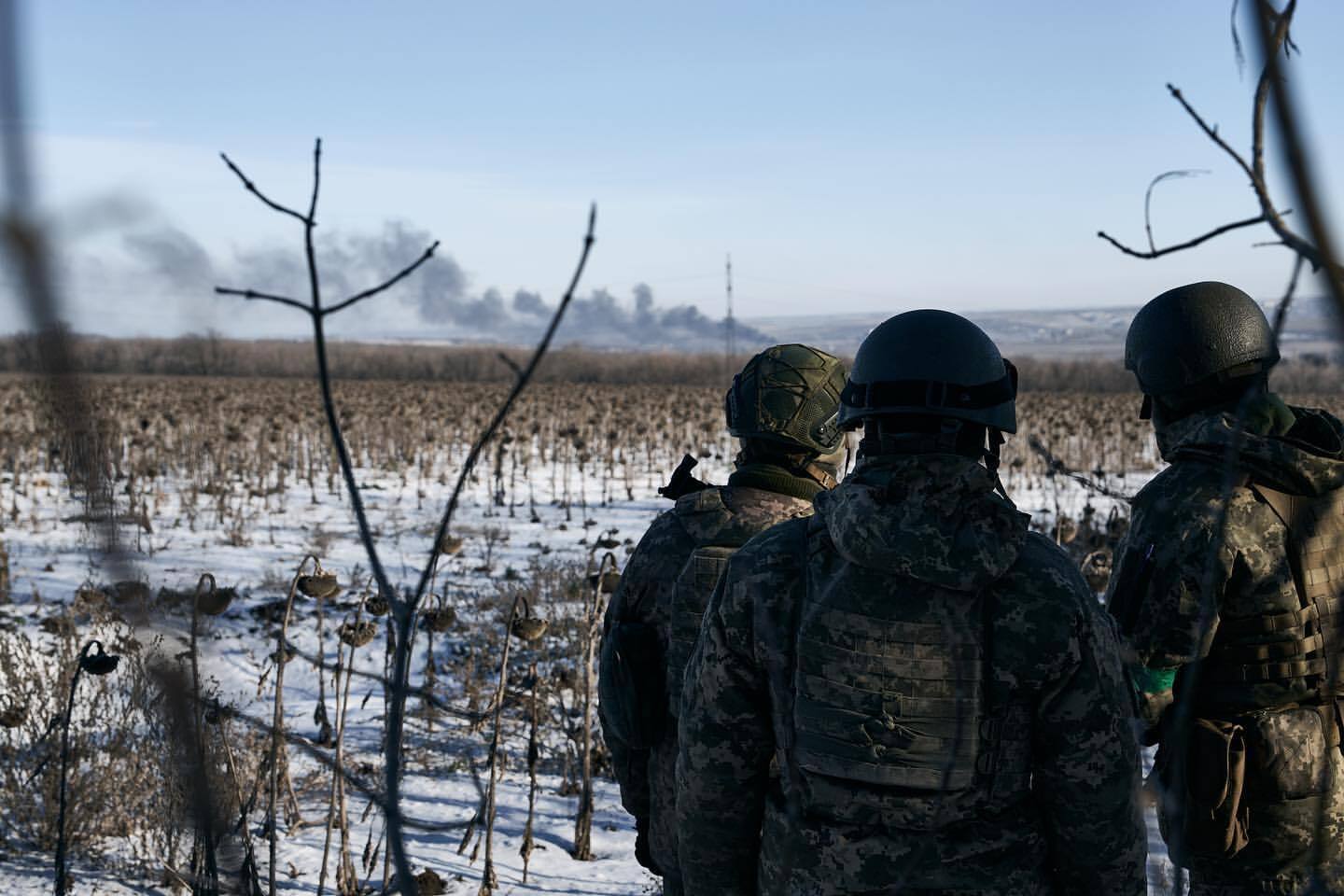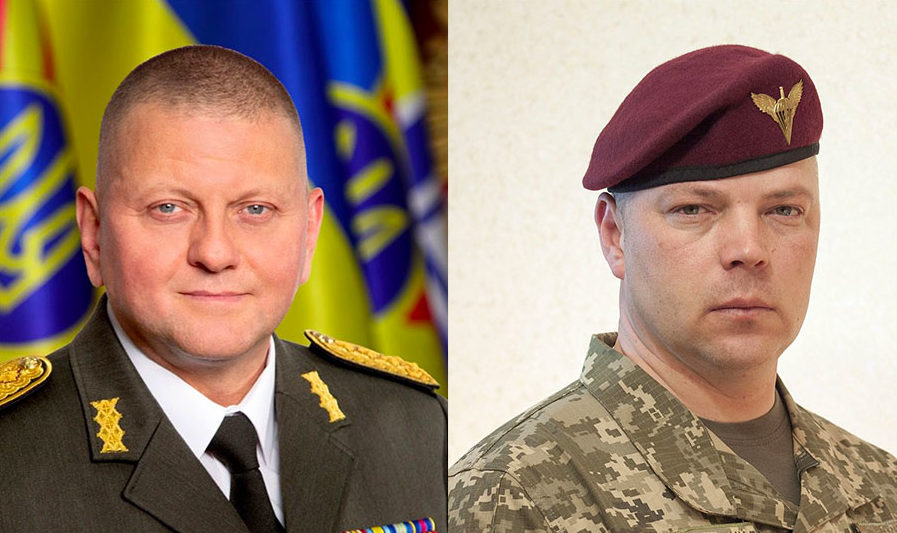Two years ago, on 24 February, at about 4 am, Russia launched a full-scale invasion of Ukraine. After a massive missile attack on Ukraine’s military infrastructure, one of the most powerful armies in the world launched a ground operation against an army that was inferior to the Russian armed forces in everything but morale and motivation.
The Russians launched a massive offensive simultaneously from the south, east, and north. The capital of Ukraine, Kyiv, was besieged for weeks. Russia had more tanks, armored vehicles, artillery, and aircraft, had the advantage in terms of air defense systems and electronic warfare, and used high-tech weapons that Ukrainians could only dream of. Almost no one in the world, except for Ukrainians themselves, believed that the Ukrainian state would be able to survive the Russian onslaught and win the battle for Kyiv.
In the face of the largest invasion on the European continent since World War II, the Ukrainian Armed Forces could only rely on outdated Soviet-era weapons and a handful of Ukrainian-made weapons (effective but few). Among the weapons that Ukraine received from the allies shortly before the full-scale invasion were US-made Javelin and Swedish-British NLAW anti-tank systems, American Stinger man-portable air defense systems, and Turkish Bayraktar armed drones.
Against all odds, Ukraine not only survived but also recaptured a significant part of the territories occupied by the Russians in the first weeks of their blitzkrieg-style offensive. In the spring of 2022, Ukrainians managed to repel an attack on Kyiv and expel Russian troops from all northern regions of the country: Kyiv, Chernihiv, and Sumy Oblasts. In the fall of 2022, Ukraine’s Armed Forces launched a successful counteroffensive in the east (Kharkiv and Luhansk Oblasts) and south (Mykolaiv and Kherson Oblasts), liberating Kherson, the only Ukrainian regional capital that Russian troops managed to occupy since the beginning of the full-scale invasion.
Unconventional tactical decisions and skillful use of limited resources brought unexpected success to the Ukrainians. Ukrainian resilience made Western allies believe that Ukraine could repel the invasion, provided it had stable military support and weapons to offset Russia’s numerical superiority in arms and manpower.
Stingers, Javelins and Bayraktars
In the first weeks of the full-scale invasion, Russian troops made significant territorial gains in northern and southern Ukraine. Instead of concentrating all their forces on the Russo-Ukrainian border to stop the Russian advance at any cost, Ukrainians resorted to maneuverable defense and semi-guerrilla methods of warfare. To avoid being overwhelmed by superior Russian air and artillery power, Ukrainian forces scattered, ambushing advancing Russian troops and delivering unexpected, devastating blows.
Confident in their superiority and believing that Ukrainians were unable to resist, the Russians moved along the roads in large convoys of military equipment. The Russian military command mistakenly believed that the entire air defense system of Ukraine was destroyed by missile strikes in the first days of the full-scale invasion. Therefore, the Russians actively used aviation without fear of losing it. The Ukrainians took maximum advantage of the Russian recklessness and overconfidence.
Mobile Ukrainian units used Stingers to destroy Russian military helicopters and fighter jets.
https://twitter.com/EuromaidanPress/status/1522177849024733184
The Stinger MANPAD is a US-made man-portable surface-to-air missile system that has an infrared homing head. Stinger MANPADS are disposable and easy to aim. The Stinger can be adapted to fire from a wide variety of ground vehicles and also from helicopters as air-to-air missiles. Stingers entered service in 1981 and are used by Ukraine’s Armed Forces and the militaries of 30 other countries.
Stingers proved extremely effective during the first phase of the full-scale Russian invasion and later. Ukrainian military managed to even shoot down Russian cruise missiles using these man-portable air defense systems. On 16 December 2022, during a massive missile attack on Kyiv, a Ukrainian soldier Andrii Dyachuk took down two Russian missiles flying toward the Ukrainian capital with precise shots from a Stinger MANPAD.
Ukrainian soldiers also effectively used various anti-tank weapons, such as the Ukrainian-made Stuhna, the American Javelin, and the British-Swedish NLAW, to ambush Russian tank convoys.
On 10 March 2022, Ukrainian defenders took a huge Russian tank convoy by surprise and used artillery and portable anti-tank weapons (most likely Javelins and NLAWs) to destroy Russian tanks in Skybyn, on the eastern outskirts of Kyiv (around 30 kilometers from the Ukrainian capital).
https://twitter.com/UAWeapons/status/1501855973069185026
The Javelin anti-tank missile system was already familiar to Ukrainian soldiers before the full-scale Russian invasion began, as it first entered the Armed Forces of Ukraine in 2018. However, on the eve of the invasion, Ukraine’s allies stepped up supplies of these systems.
Javelin began to be developed in the 1980s in the United States. They were created specifically to destroy Soviet tanks, taking into account their characteristics, tactics of use, and different types of terrain where such tanks could be destroyed.
The range of the Javelin is 2.5 kilometers, which is the average line of sight in Europe. The Javelin anti-tank missile is characterized by a so-called “soft launch,” which means that the Javelin operator avoids any injuries when firing from the shoulder. Most importantly, the Javelin has its own thermal imaging homing head and can fly to the target on its own after capturing it.
NLAW is a new generation of light anti-tank weapon, a joint Swedish-British project. Production of the NLAW man-portable anti-tank guided missile began in 2009. Ukraine has received thousands of NLAWs from its allies so far.
The main feature of this anti-tank system is its ease of use and maximum efficiency. The NLAW was actively used at the very beginning of the Russian all-out war against Ukraine to counter a tank invasion on the outskirts of Kyiv.
Battle of Kyiv: tactics and tricks that saved Ukrainian capital
NLAW was conceived as a mass weapon for ordinary soldiers. In normal mode, the missile flies about four meters above the ground. At the same time, a magnetic sensor is triggered to detect the accumulation of metal. The tank is usually pierced from above.
In addition to Western-supplied anti-tank weapons, Ukraine actively employed the weaponry of its own production, such as the Stuhna-P. The Stuhna is a Ukrainian anti-tank guided missile (ATGM) system developed in the early 2010s by the Luch Design Bureau, a unit of Ukroboronprom, a leading arms manufacturer.
The Stuhna is designed to destroy modern armored targets with combined carried or monolithic armor, including explosive reactive armor (ERA). The Stuhna can attack both stationary and moving targets and can be used to attack from both long-range (up to 5 kilometers) and close-range (100 meters). Ukrainian soldiers use this weapon to attack point targets, such as weapon emplacements, lightly armored objects, and even hovering helicopters. The Stuhna has two targeting modes: manually steered, and automated fire-and-forget that uses no manual tracking of a target.
The aforementioned anti-tank weapons were the backbone of Ukrainian maneuver warfare at the initial stage of the full-scale Russian invasion. The Ukrainian Armed Forces also actively used Turkish-made Bayraktar TB-2 armed drones to hit Russian military equipment, which was not protected by Russian frontline air defense systems.
While Ukrainian artillery used shoot-and-scout tactics to pound at Russian forces, Ukrainian drone operators skillfully used Bayraktars to burn down Russian tanks, infantry fighting vehicles, and artillery systems from the air. During the first weeks of the Russian invasion, the effectiveness of Bayraktar drones turned these unmanned aerial vehicles into the symbol of Ukrainian resistance, with songs being composed about them.
The Ukrainian army has been using Bayraktar drones since 2019. A Bayraktar TB-2 armed drone is six and a half meters long, over two meters high, and has a wingspan of 12 meters. This drone can stay in the air for 24 hours with a maximum flight range of up to 4,000 kilometers. Bayraktars can shoot within a radius of 150 kilometers.
Ukraine has become one of the first countries (along with Azerbaijan) to actively use Bayraktar armed drones on the battlefield, Mykhailo Samus, a Ukrainian security and defense expert, said in his interview with Euromaidan Press.
“Bayraktars, drones that carry and perform reconnaissance and strike functions, were a breakthrough for Ukraine, as the Russians did not have such means. Bayraktars played a very important role. When the Russians planned their operation, they carried missile strikes on our air defense and our aviation control system. When the Russians started to advance, they thought that Ukraine had no strike weapons and no air defense. The Bayraktars felt comfortable in this situation and struck at the columns of the Russian forces that invaded the territory of Ukraine,” Mykhailo Samus said.
After the Russian military command deployed more frontline air defense systems on the battlefield to combat the Bayraktar threat, Ukrainians began using these drones primarily for reconnaissance.
HIMARS and heavy artillery
Having won the battle for Kyiv, the Ukrainian Armed Forces faced a new challenge. In the face of extremely intense fighting, Soviet-era 152-mm artillery ammunition stocks were rapidly depleting and reached a critically low level in the summer of 2022. Ukraine’s Western allies stepped up their military support by providing much-needed ammunition and artillery systems to Ukraine.
The Ukrainian army had to rebuild on the fly and massively use 155-mm artillery shells and NATO-standard artillery systems for the first time in its history. The allies supplied Ukraine with various towed artillery systems and self-propelled howitzers.
After the Russian blitzkrieg failed, Russia shifted its focus to the Donbas region in the eastern part of Ukraine. The Russian army had a significant advantage in artillery and ammunition, razing Ukrainian cities to the ground.
Russia’s decade of war against Ukraine exposes folly of appeasement
Ukraine desperately needed more artillery and ammunition to counter the Russians. In these dire circumstances, Ukraine’s Western allies quickly decided to provide artillery systems to help the Ukrainians deter Russian attacks.
Australia, Canada, and the United States were among the countries that sent modern M777 howitzers and ammunition to Ukraine. The M777 howitzer is an artillery system developed by the British company BAE Systems in the early 2000s. It has been in service with the United States since 2005.
There are three versions of the howitzer: the basic version, the one with optical sighting, and the one with the ability to fire M982 Excalibur precision-guided missiles. Ukrainian defenders effectively use all modifications they have at hand.
Besides towed artillery, Western allies provided the Ukrainian Armed Forces with various types of self-propelled howitzers. Several countries supplied Ukraine with US-made M109 A6 Paladin self-propelled howitzers. Ukraine has received Paladins from the US, UK, Italy, Latvia, and Norway.
The Paladin’s ability to redeploy fast after firing made them a huge challenge for Russian artillery units. The Paladin fires 155-mm artillery shells within a range of up to 24 kilometers. Ukrainian artillerymen also use this howitzer to hit targets less than ten kilometers away.
Along with Paladins, Ukrainian troops rely heavily on German-made Panzerhaubitze or PzH 2000, Polish-made Krab, Ukrainian-made Bohdana, French-made Caesar, and Swedish-made Archer self-propelled howitzers.
The PzH 2000 is a German 155-mm self-propelled howitzer with automatic support for up to five simultaneous shots. The ammunition in the PzH 2000 is replenished automatically. Two operators can load 60 rounds of ammunition and projectile charges in less than 12 minutes. In addition to the Armed Forces of Ukraine, the PzH 2000 is in service with the armies of Germany, Italy, the Netherlands, Greece, Lithuania, Hungary, Qatar, and Croatia, mostly replacing outdated systems.
The AHS Krab (Polish for crab) is another effective self-propelled howitzer that Ukraine’s Armed Forces started to operate during the full-scale Russian invasion. It is a 155-mm NATO-compatible self-propelled howitzer that combines a heavily modified South Korean K9 Thunder chassis with a British BAE Systems AS-90M Braveheart turret.
The Krab has an automatic shell loading system and a modular charge system. The maximum range of fire is 30-40 kilometers, which exceeds the range of the most common Russian howitzers MSTA (25 kilometers), Akatsiya (24 kilometers), and Gvozdika (around 15 kilometers). The Krab howitzers are highly effective in Ukrainian hands.
The highly accurate and mobile French-made Caesar self-propelled howitzers also significantly boosted Ukrainian artillery capabilities when the Russian invasion was already in full swing. Provided to Ukraine by France and Denmark, a Caesar has become one of the most effective artillery systems in the Ukrainian arsenal.
Ukraine purchased six Caesars from France at its own expense; the French government paid for the rest of the howitzers. Ukraine currently has 49 Caesar self-propelled howitzers donated by France and Denmark.
In January 2024, French Defense Minister Sebastien Lecornu announced that France would manufacture 78 Caesar howitzers for Ukraine. Denmark donated all of its 19 Caesars to Ukraine in 2023.
These howitzers can destroy Russian equipment at a distance of up to 50 kilometers. The Caesar’s mobility and maneuverability are due to its wheeled chassis. Caesars can be prepared for operation in one hour, and it takes only 40 seconds to deploy and leave the position. This self-propelled howitzer is also equipped with an automated system of self-tethering and homing. The Caesar can fire up to five shells in one minute and can use several types of 155-mm ammunition, including cluster munitions that help Ukraine eliminate Russian assault infantry.
Ukraine can also be proud of the Bohdana, a modern self-propelled howitzer of domestic production that fires NATO-standard 155-mm shells. Pieced together using old Soviet trucks and Western shells, the highly effective Bohdana (a popular female name in Ukraine) strikes as far as the French Caesar but at half the price.
Meet Bohdana, Ukraine’s gritty goddess of war with NATO-caliber punch
Ukraine has gone from a single prototype to mass production of the Bohdana in less than two years, overcoming Russian missile strikes against its facilities in 2022. Ukrainian engineers relocated production plants and launched mass production of Bohdana despite the ongoing invasion.
The Bohdana has an armored double cabin and storage for around 20 shells. The howitzer has a minimum range of 780 meters and a maximum range of 40 kilometers. It has an average rate of fire of six rounds per minute. Currently, Ukraine’s Armed Forces operate 30 Bohdana howitzers. Notably, none of them has been destroyed in two years of war.
https://twitter.com/EuromaidanPress/status/1542464258461601792
A Swedish-made Archer is the most advanced and modern artillery system in service with the Ukrainian Armed Forces today. This self-propelled howitzer has a 155-mm cannon with an automatic loading system and digital targeting. It is mounted on a modified truck chassis rather than tracks, enabling rapid strategic movement and deployment. The armored cabin protects the crew from small arms fire and shrapnel.
The fully automated gun system significantly reduces crew size while achieving a high rate of fire (up to eight rounds per minute). The Archer can reload automatically from a large 21-round magazine. Advanced computerized fire control and the use of guided munitions like high-precision Excalibur projectiles give Archer a 50-km range with pinpoint accuracy.
The Archer is virtually invulnerable to Russian counter-battery artillery fire due to its ability to fire at a greater range than any Russian howitzers and quickly redeploy. Extremely short reaction and displacement times allow Archer to deploy, fire a mission, and move within just minutes. This improves survivability on the modern battlefield. Sweden supplied Ukraine with eight Archers. Another four are underway.
However, a real game-changer on the battlefield was the arrival of the US-made M142 High Mobility Artillery Rocket System (HIMARS) in Ukraine in the summer of 2022. HIMARS came when Ukraine needed them the most. The creeping Russian offensive in the Donbas region (eastern Ukraine) was in full swing. Russia had a huge advantage in artillery systems and ammunition, firing 40,000-60,000 shells per day (compared to 2,000-7,000 shells per day fired by the Ukrainian Armed Forces) and razing entire cities to the ground.
The Ukrainian military command took a smart approach to using HIMARS, targeting ammunition dumps, oil depots, and command posts in the Russian rear. Regular HIMARS strikes at ammunition dumps significantly decreased Russian firepower and slowed down Russia’s offensive on the eastern front.
Russia’s nightmare comes true. HIMARS altering the course of the war in Ukraine, but for how long?
HIMARS can fire satellite-guided rockets within a range of about 80 kilometers. The HIMARS is a light multiple rocket launcher developed in the late 1990s for the US Army. Along with HIMARS, Ukraine also received its analog, the M270 MLRS, an American armored self-propelled multiple-launch rocket system.
Eventually, the Russians had to move their ammo depots deeper into Russian-occupied territories of Ukraine to avoid HIMARS strikes, which increased the logistical burden of delivering ammunition to the front.
In the autumn of 2023, the US supplied Ukraine with a limited batch of long-range ATACMS missiles with cluster munitions that can be launched from HIMARS. These missiles can hit targets within a range of 160 kilometers.
Ukraine immediately used the new capabilities to attack airfields deep in the Russian-occupied territories of Ukraine. On 17 October, Ukraine struck Russian-occupied airfields in Luhansk (eastern Ukraine) and Berdiansk (southeastern Ukraine) with ATACMS missiles, destroying and damaging Russian attack helicopters. As a result, the Russian military command was forced to relocate its helicopters to the territory of Russia, beyond the range of HIMARS strikes.
A piece of the puzzle Ukraine needs to win
During the two years of the full-scale Russian invasion, Ukraine received a huge variety of weapons from its allies, which helped Ukrainians not only repel Russian attacks but also liberate large swathes of occupied territories.
In 2023, Ukraine received its first Western-style main battle tanks from several countries. Britain supplied modern Challenger-2 tanks, Germany and a number of other European countries supplied Leopard tanks, and the US provided Ukraine with Abrams tanks. Ukraine also received a broad range of armored vehicles and infantry fighting vehicles (IFVs), including highly effective US-made Bradley IFVs.
Western air defense systems like US-made Patriot, US-Norwegian NASAMS, German-made IRIS-T and Gepards, Italian-French SAMP, and many other systems of different operational ranges help Ukraine protect its cities from Russian aviation and constant missile attacks and kamikaze drone strikes.
The United Kingdom and France supplied Ukraine with long-range cruise missiles Storm Shadow/SCALP EG, capable of hitting targets at a distance of 250 kilometers (Ukraine has already used these missiles to destroy the headquarters of the Russian Black Sea Fleet, Russian warships, and even a submarine in the drydock in occupied Crimea).
Ukraine used its own anti-ship Neptune missiles to destroy the flagship of the Russian Black Sea Fleet, cruiser Moskva, in April 2022. Ukrainian-made maritime kamikaze drones have already forced the Russian military command to relocate most of the Russian Black Sea Fleet away from the occupied Crimea in southern Ukraine to ports in southwestern Russia. A country that has virtually no navy of its own has forced one of the most powerful fleets in the world to hunker down on the Russian coast for fear of Ukrainian drone attacks.
Ukraine is effectively using domestically produced long-range aerial kamikaze drones to target airfields, weapons factories, and oil refineries inside Russia. Lacking long-range missiles of its own production and being in dire need of ammunition, Ukraine is increasingly relying on drones of various types to neutralize Russia’s advantage on the battlefield and disrupt its logistics in the rear. The rapid development of the Ukrainian drone industry has already revolutionized warfare and made its way into textbooks on the history of wars.
However, this success story is overshadowed by the hesitation of the US Congress to provide much-needed military assistance to Ukraine and the failure of European allies to ramp up ammunition production to keep up with Russia, which has already put its economy on a war footing.
An American veteran’s plea: arm Ukraine or surrender freedom
Moreover, the unwillingness of the United States and Germany to provide Ukraine with long-range missiles (ATACMS and Taurus, respectively) could undermine all of Ukraine’s efforts to repel the Russian invasion, liberate its territories and people, win the war, and bring back peace to the European continent. Ukraine desperately needs long-range capabilities to destroy the Crimean Bridge (a key supply route connecting Russia to occupied Crimea), which would disrupt Russian logistics in southern Ukraine and help Ukrainians push the Russian army out of the South.
Ukraine needs Western aircraft, such as American F-16s or Swedish Gripen, to challenge Russian air superiority on the battlefield and stop Russia from raining glide bombs on Ukrainian frontline cities. The good news is that Ukraine will receive several dozen F-16 fighter jets from the Netherlands and Denmark this year.
The courage and resilience of Ukrainians sometimes make one forget that Ukraine is a small European country compared to Russia. Russia’s territory is 28 times larger than Ukraine’s, and its population is almost four times larger than Ukraine’s. To defend itself and repel the Russian invasion, Ukraine needs steady military support from Western allies and must rely on high-tech weapons that can neutralize the Russian advantage in terms of resources.
Russia’s war against Ukraine is reminiscent of the biblical battle between David and Goliath but with drones instead of stones. Whether this story will have the same ending remains to be seen.
Related:
- 10 years of war captured in indelible images by Ukrainian artists
- Russia pays heavy toll in Avdiivka, more than USSR in 10 years in Afghanistan, says Kuleba
- Dignitaries converge in Kyiv on second anniversary of full-scale invasion
- How Ukraine has changed over ten years since Euromaidan Revolution








